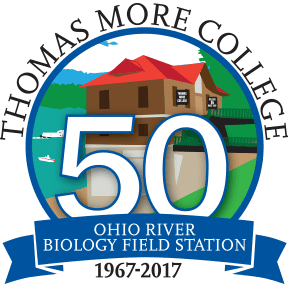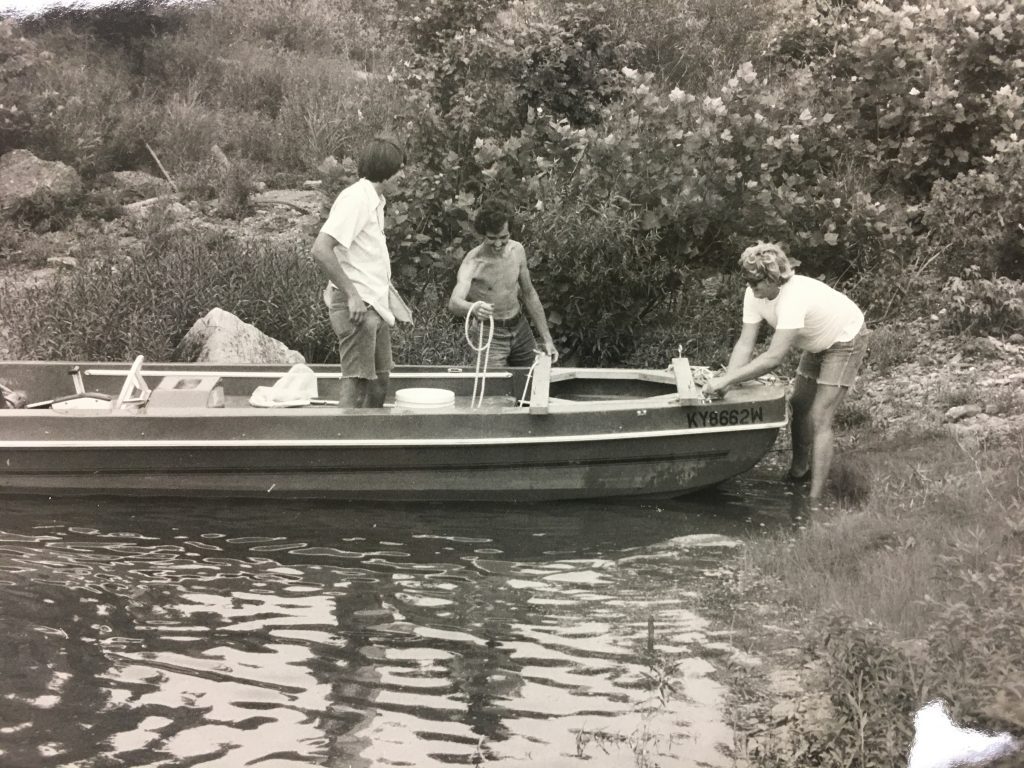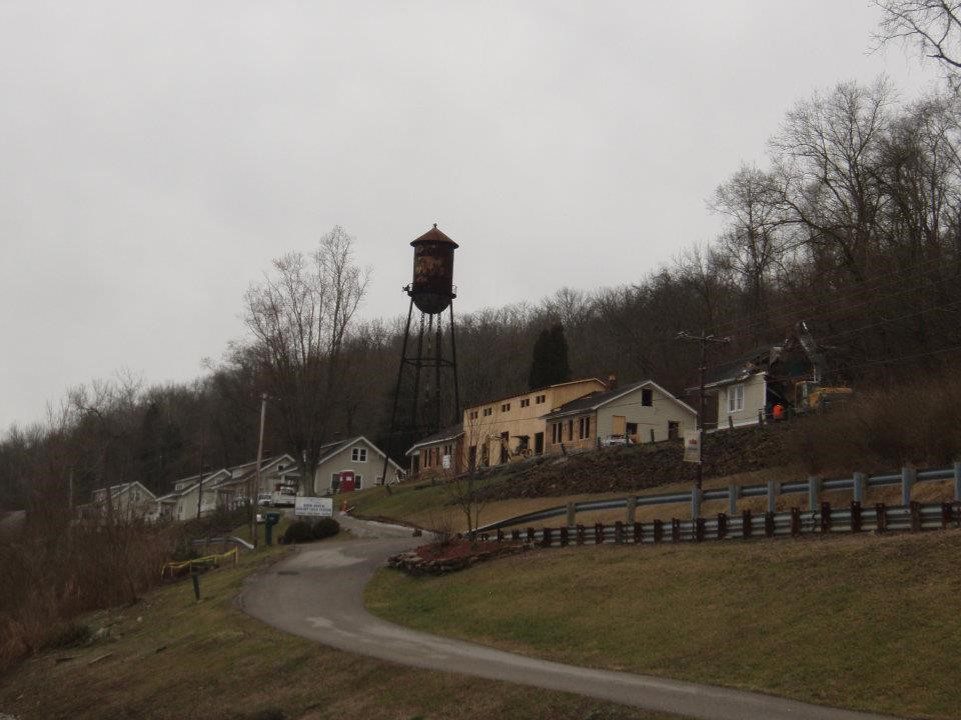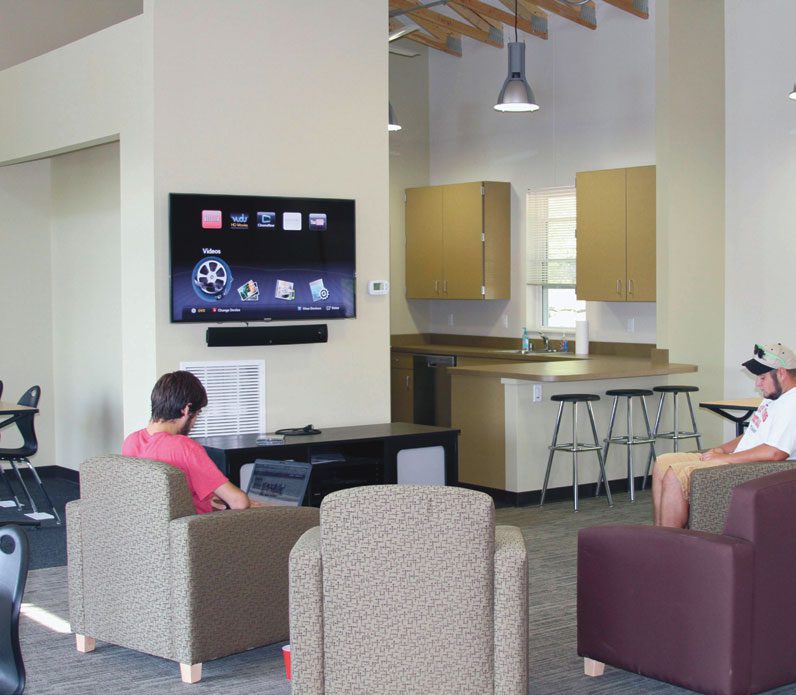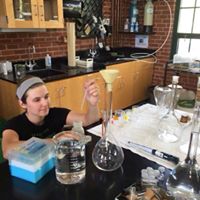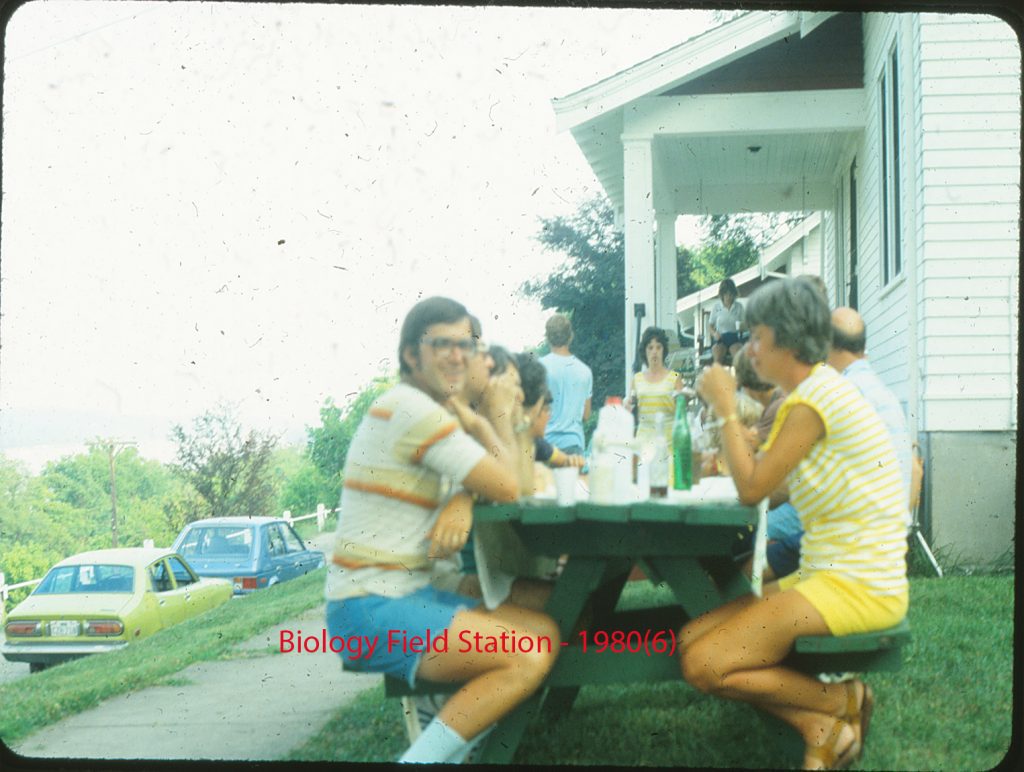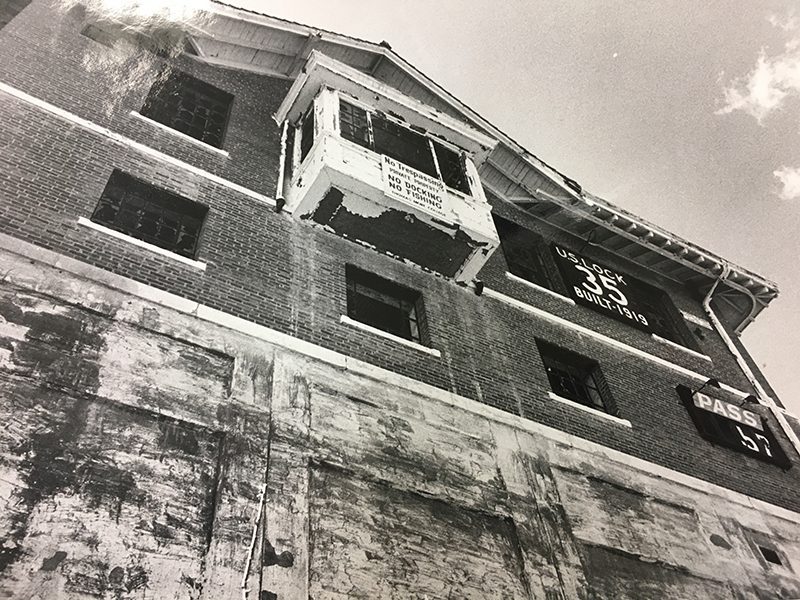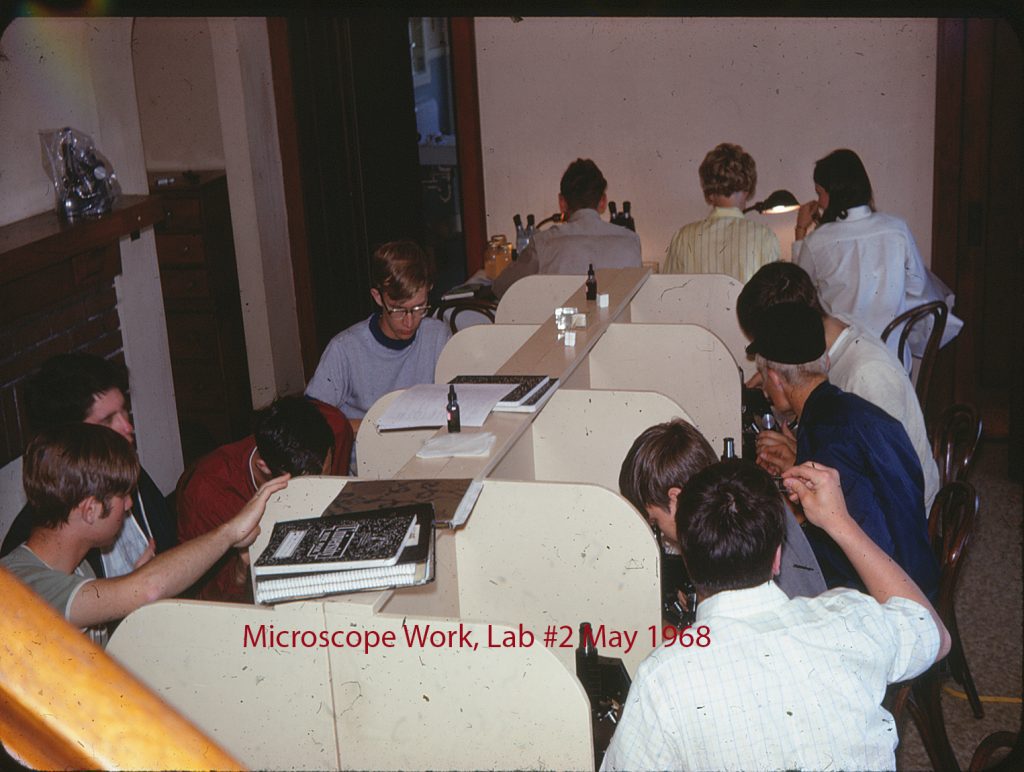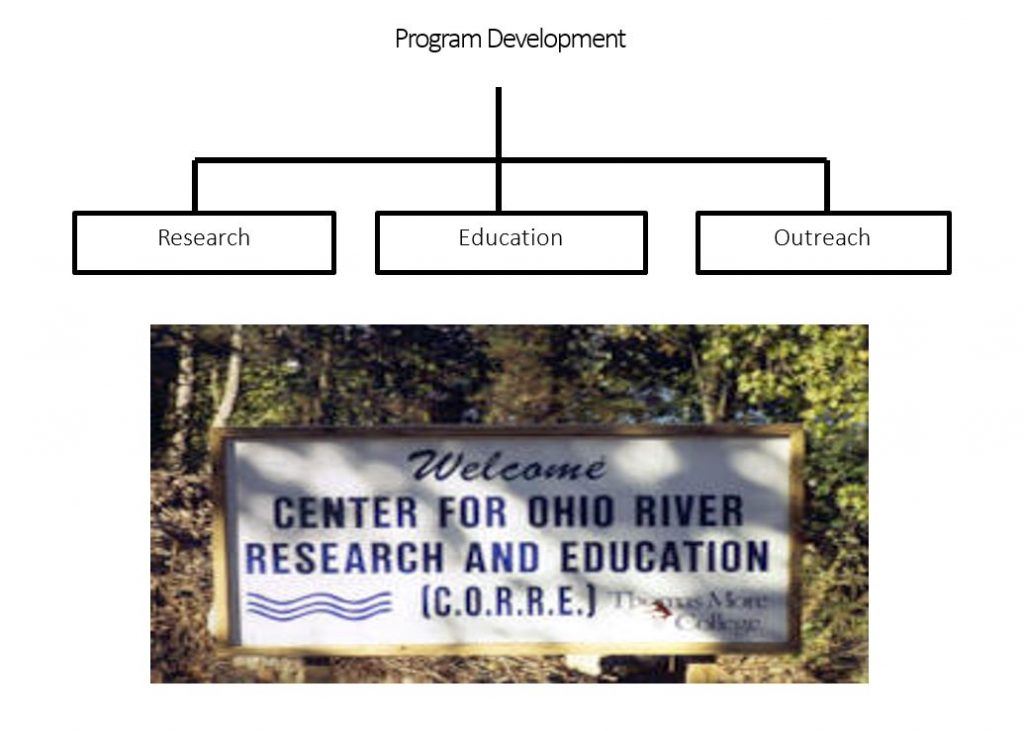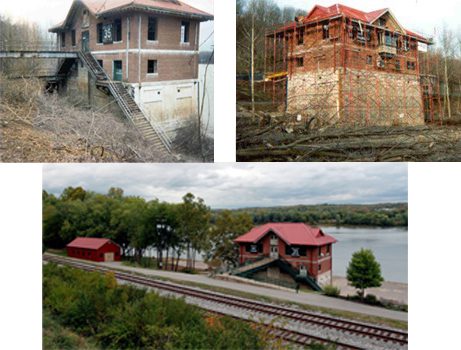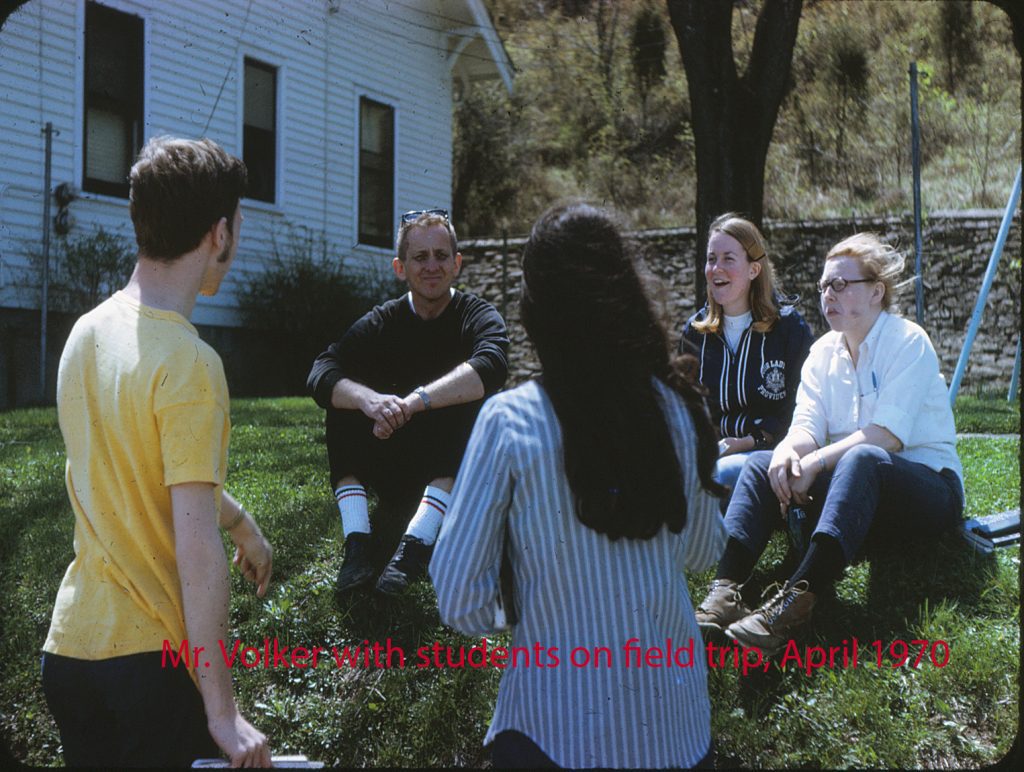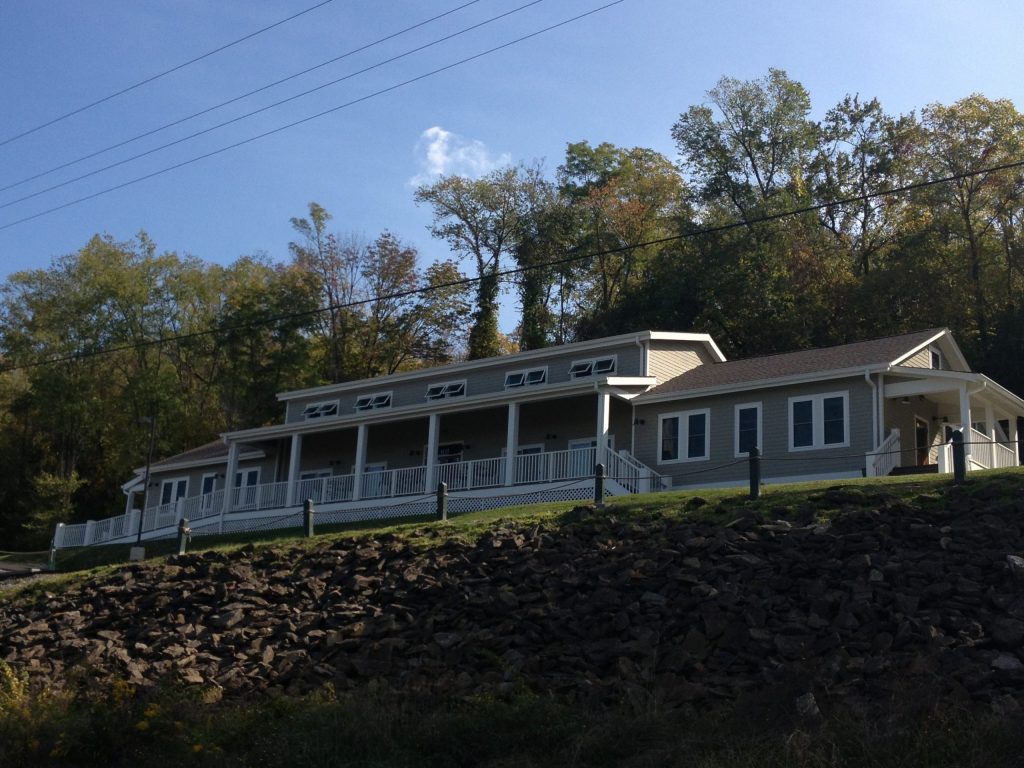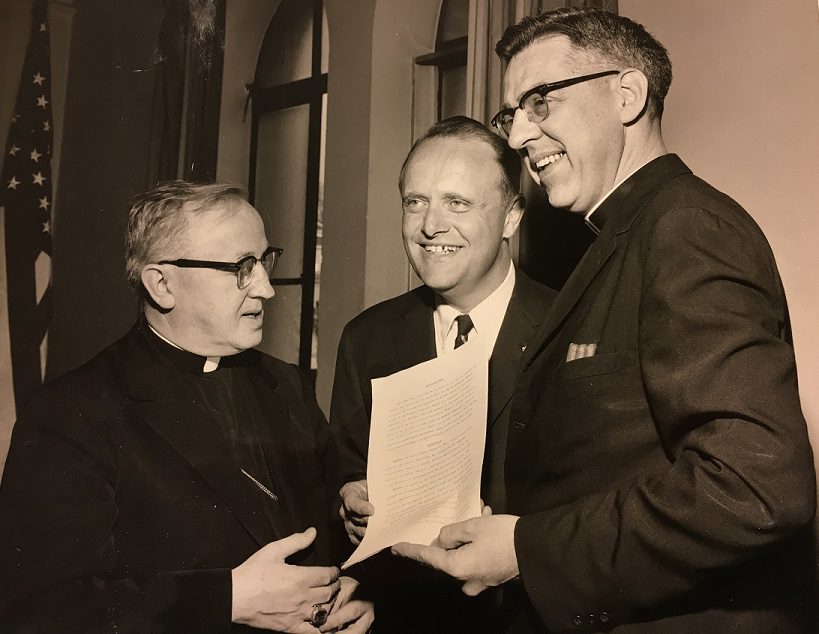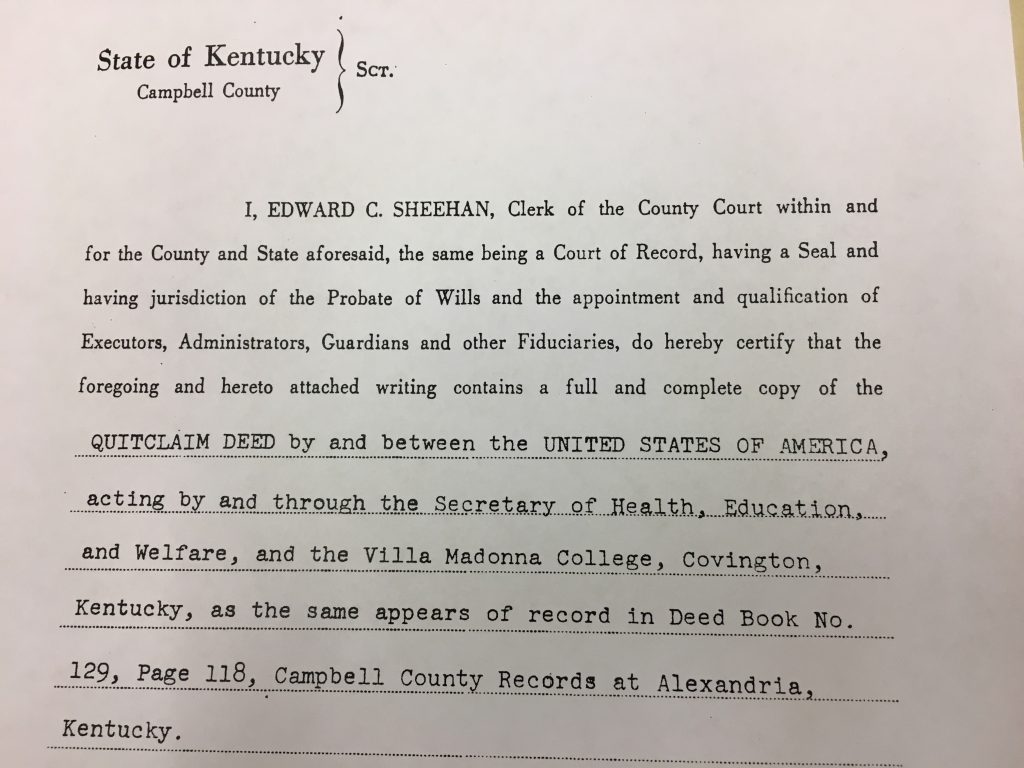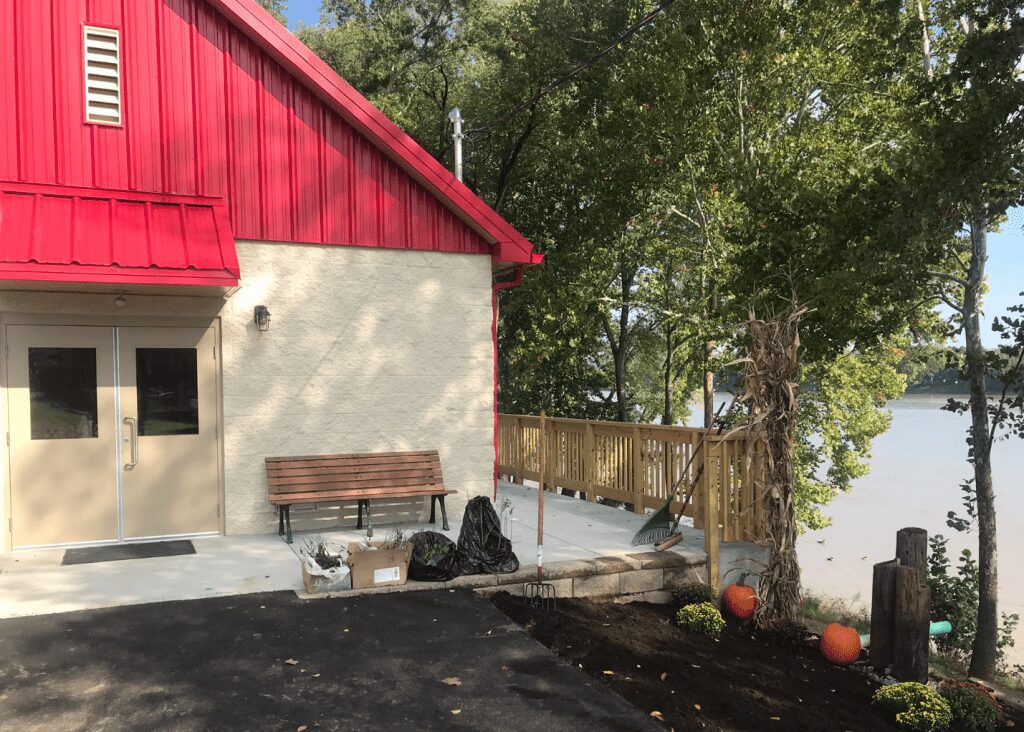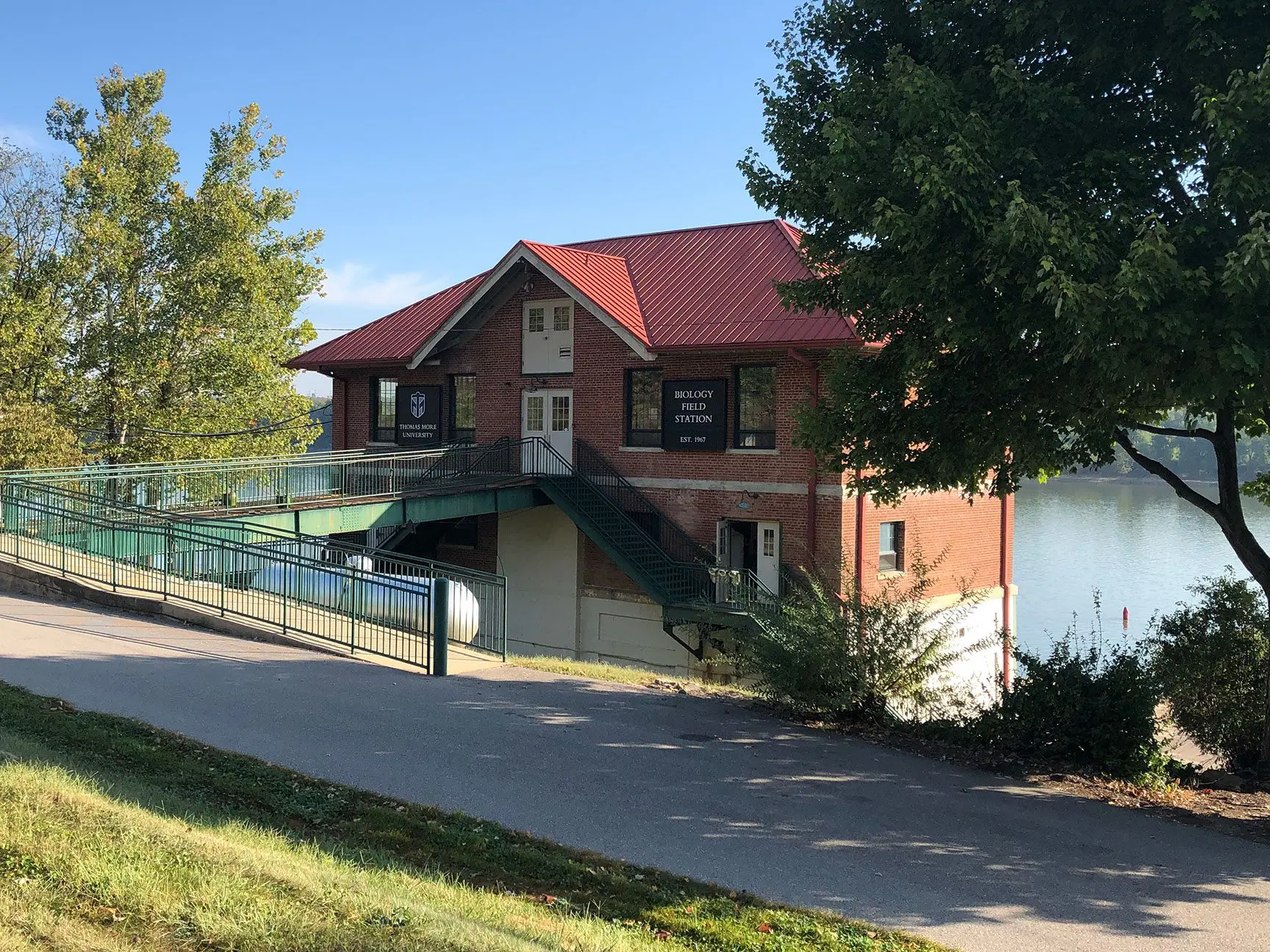
Field Station History
USACE Lock and Dam Facility (1919-1964)
The Thomas More University Biology Field Station was the former site of Lock and Dam 35, one of 51 such facilities built by the U.S. Army Corp of Engineers in the late 19th and early 20th centuries. Land for the complex was obtained by the federal government from several sources beginning in the 1910’s. A total of 12.73 acres were purchased originally for $3030.00. The construction on Lock and Dam 35 was begun in 1914 and completed in 1919. The initial complex included a Chanoine weir wicket dam with rolling lock gates, a lockhouse or powerhouse, warehouse, and four worker’s cottages. Three additional cottages, a boiler garage, and storage shed were added later.
Field Station Established in 1967
The University acquired the 25-acre site in 1967 from the federal government through a grant co-written by Sister Mary Laurence. For the first 30 years of the Field Station, the University shared joint ownership with the Federal Government. Provided the facility was used exclusively for research and educational purposes, the property was to be turned over to the University in 1997, at which time we took over sole ownership of the place.
The Early Years (1970s-1990s)
The Cincinnati Gas and Electric Company (now Duke Energy) provided the first funding for undergraduate research at the Station, marking the company’s ongoing support of the Station. The project, initiated by Thomas More students, entailed the study of the fish populations and water chemistry of the River around Beckjord Power Plant. During this time, the Lockhouse sat vacant; while the faculty, including Sister Mary Laurence, Drs. Bryant and Ferner and students worked out of the houses on the hill. Over the years, nearly 300 student interns have taken part in the research at the Field Station.
Major Renovation Project (1996-1998)
In 1997, through a grant from the James Graham Brown Foundation, the former Lockhouse underwent a major renovation project, creating the space for what now includes state-of-the-art research laboratories, a classroom, and office. This renovation helped set the stage for the onset of laboratory research and ultimately transformed the Field Station to a year-round facility.
Programmatic Growth: Research Education and STEM Outreach (2000-present)
Soon after the major renovation of the Lockhouse, the Center for Ohio River Research and Education (C.O.R.R.E.) was established. Since then a major growth of the laboratory research, in conjunction with the US EPA and US Fish & Wildlife Services, has taken place. In addition, the K-12 STEM Outreach Programs have exploded to include teacher workshops, grade school field trips and high school summer camps, much of which has been funded by the Toyota USA Foundation and the DUKE Energy Foundation.
Major Renovation Project (2011-2012)
In 2011, the University completed a capital campaign, raising $1.6M, anchored by a $500K challenge grant from the James Graham Brown Foundation, to build a conference center at the Field Station. The Lodge, as its called, is a start-of-the-art, LEED-certified facility that hosts a variety of groups from student organizations to professional societies. The building was constructed by first renovating and integrating two of the original L&D houses and then building a new section in between.
The Lodge consists of 11 dorm rooms, each with a bunk bed, a full kitchen, living area, and smart classroom. Recently, the building received L.E.E.D. certification by the U.S. Department of Energy and is the University’s first certified green building on campus.
SML Outdoor Classroom and Nature Trail
Soon after the Lodge was completed, the Sister Mary Laurence Outdoor Classroom and Interpretive Nature trail were developed, both serving to host STEM outreach educational events and social activities.
2017-Beyond
2017 marks the 50th anniversary of the Field Station. Over these years, the Station has grown into a full-fledged biological research facility and STEM outreach center. Research occurs year-round in the labs and in the field. Undergraduate students from Thomas More and from other schools across the country follow in the footsteps of those pioneers from the 60s and 70s. Plans are now underway to secure funds for two new buildings: a K-16 STEM Outreach Center and a boathouse. And a new “Friends of the Field Station” giving society was created to help support the programs at the Station, as we continue to educate and engage students of all ages about the ecology of the Ohio River watershed and empower them to make a positive impact on the environment.
